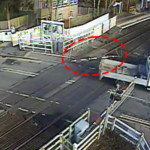The Rail Safety and Standards Board (RSSB) has published a refreshed Rail Health and Safety Strategy for the industry.
Britain’s railways are among the safest in the world. However, it isn’t risk-free, and there is a need for industry to continue to work together to tackle shared risks, and deliver a safe railway for both passengers and freight customers.
Today’s railway is facing significant challenges in cost, performance and reliability. The new strategy aims to help Britain’s railways address both these and the key safety and employee wellbeing risks in a joined-up way. These are encapsulated in the vision: having the world’s healthiest, safest, and affordable railway.
Collaboration will be key. The industry-led Rail Health and Safety Strategy is a five-year plan to deliver this vision. Its development was driven by the System Safety Risk Group and the Rail Wellbeing Alliance, overseen by the Rail Industry Health and Safety Executive Advisory Group. The strategy focuses on:
· Making rail more attractive
We want to improve performance and accessibility so that rail is a practical and attractive for everyone.
· Enhanced Safety Management
We’re looking for better, more effective ways to manage existing and emerging safety risks.
· Prioritising Workforce Wellbeing
We want to make to make sure staff are safe and healthy, so more people want to work in rail.
This strategy is all about collaboration, sharing good quality data, industry taking action, and measuring progress.
Mark Phillips, Chief Executive, RSSB, said: ‘Britain’s rail industry is a vital part of the economy and society. It provides essential transport services for people and goods. It has a strong track record of improving safety and health performance, but there is no room for complacency. The industry faces several challenges including cost and reliability. Passenger demand patterns have changed, and ticket revenue is still lower overall than in 2019. The system needs to be more agile to attract more freight onto rail. And we need to prepare for a changing climate.
“These challenges require a proactive and collaborative approach to managing safety and health risks for a safe, reliable, and sustainable rail system. It requires a strong commitment from all the parties involved, and a continuous monitoring and evaluation of the progress and impact of the actions and initiatives. By implementing this strategy, the rail industry will demonstrate its leadership and excellence in safety and health management and will contribute to the social and economic wellbeing of the UK.”
Ann Mills, RSSB Deputy Director System Safety & Health, said: “Health and safety is critical to a strong industry and must be a shared responsibility. There are no shortcuts. Collaboration is the key and over the past year, industry has come together under the guidance of the cross industry risk groups to develop the Rail Health and Safety Strategy aimed at delivering the shared vision of a healthier, safer, and affordable railway.
“Prepared by the industry for the industry, the strategy covers five key risks. It sets out key strategic initiatives to improve the health, safety, and wellbeing of our workforce and the safety of our passengers, and the public who interact with the railway.
“To realise the benefits of this five-year strategy, all parties need to work together. Implementing the strategy will demonstrate rail’s contribution to the social and economic wellbeing of the UK and its leadership and excellence in safety and health management. To find out how you can play your part in delivering a healthier, safer, and affordable railway, read the strategy and contact us for more information.”
Ellie Burrows, Regional Managing Director, Network Rail, and Chair, System Safety Risk Group, RSSB said: “This strategy comes at a vitally important time for the rail industry. Taking an industry wide assessment of key risks, it was developed through extensive industry consultation. It identifies the opportunities that offer the greatest benefit and value from working in collaboration, and sharing good quality data and best practice across the sector. It really is a vision created by the whole industry for the benefit of us all.”
David Horne, Managing Director, LNER, Chair of Rail Wellbeing Alliance, and Non-Executive Director, RSSB said: “Over a million workdays are lost to sickness absence every year across the rail industry–nearly twice the national average rate of sickness. These are workdays the industry can scarcely afford to lose. This strategy sets out the commitments and actions needed to ensure a healthier workforce, and by extension, a healthier rail industry.”

